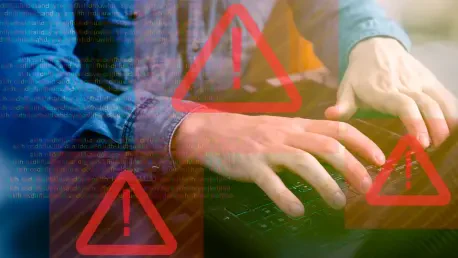Cybersecurity has become one of the most pressing concerns in our technologically advanced world, particularly in 2025, with the proliferation of increasingly sophisticated threats. As hackers grow more cunning and exploit new vulnerabilities, the question remains: How prepared are we to counter these dangers? Understanding the current landscape of cybersecurity is crucial for any organization seeking to protect its digital assets from potential devastation.
The Current Cybersecurity Landscape
In 2025, the cybersecurity industry is in a state of heightened alert due to the increasing complexity and frequency of cyberattacks. This dynamic environment affects diverse sectors, including finance, healthcare, and government, each facing unique challenges. Technological impacts are profound, with the integration of artificial intelligence and cloud computing presenting fresh vulnerabilities. Dominant market players like Microsoft, Fortinet, and SonicWall are at the forefront, providing vital security solutions. Compliance with regulatory frameworks such as GDPR and CCPA is essential, ensuring businesses uphold stringent data protection standards amidst evolving threats.
Trends and Emerging Threats
Evolving Cybersecurity Dynamics
The cybersecurity domain is undergoing significant changes, driven by emerging trends. The advent of quantum computing and machine learning has reshaped security paradigms, enabling more precise threat detection while presenting new attack vectors. Behavioral shifts in digital engagement, such as increased remote work, amplify vulnerabilities, making systems more susceptible to breaches. As market forces push for more robust defenses, opportunities arise for innovative security applications and technologies that cater to the evolving threat landscape.
Market Outlook and Projections
Current market data reflect a robust growth trajectory, with cybersecurity spending projected to escalate significantly until 2027. Key performance indicators reveal substantial investments in advanced threat detection systems and secure access solutions. Future developments envision strengthened cybersecurity measures, driven by collaborative efforts among industry stakeholders to anticipate and counteract sophisticated cyber threats. Strategic foresight grounded in present-day data and trends is crucial for navigating potential disruptions and fostering security in an increasingly interconnected digital world.
Challenges and Strategic Responses
Cybersecurity challenges remain multifaceted, influenced by technological advancements, regulatory constraints, and market dynamics. Technological hurdles include developing resilient systems to counteract rapidly evolving threats. Regulatory complexities challenge organizations to ensure compliance while maintaining robust security frameworks. Strategic responses necessitate leveraging innovative solutions such as artificial intelligence and blockchain to enhance system integrity. Multi-layered security protocols and adaptive risk management strategies are imperative to safeguard sensitive data and thwart potential breaches.
Navigating the Regulatory Environment
Regulations play a pivotal role in shaping cybersecurity practices, with stringent laws and standards mandating rigorous protections. Compliance with legislation like GDPR demands adherence to security protocols, impacting operational methodologies. Security policies must evolve in response to regulatory adjustments, ensuring organizations remain compliant while safeguarding their networks. Embracing collaborative efforts between industry regulators and security providers fosters a resilient ecosystem critical to maintaining robust defenses against emerging cyber threats.
Future Directions in Cybersecurity
The cybersecurity landscape is on the cusp of transformative trends, with technological advances poised to revolutionize defense mechanisms. Innovations in quantum encryption and artificial intelligence-based threat prediction systems are set to redefine how organizations approach security. Potential disruptors such as geopolitical shifts and economic fluctuations necessitate proactive planning and investment in cutting-edge solutions. Exploring future industry directions demands a keen understanding of technological progress and regulatory implications to anticipate and counteract potential cyber risks.
Conclusion and Strategic Insights
Findings indicate the urgent need for continuous enhancements in cybersecurity measures amid the evolving threat landscape. Proactive patching of known vulnerabilities and leveraging novel exploitation techniques are critical to sustaining network integrity. Investment in advanced threat detection systems, coupled with strategic partnerships, will be instrumental in combating persistent cyber threats. As challenges intensify, a forward-thinking approach grounded in comprehensive security protocols promises to safeguard sensitive information and foster resilience against ever-changing cyber assaults.









